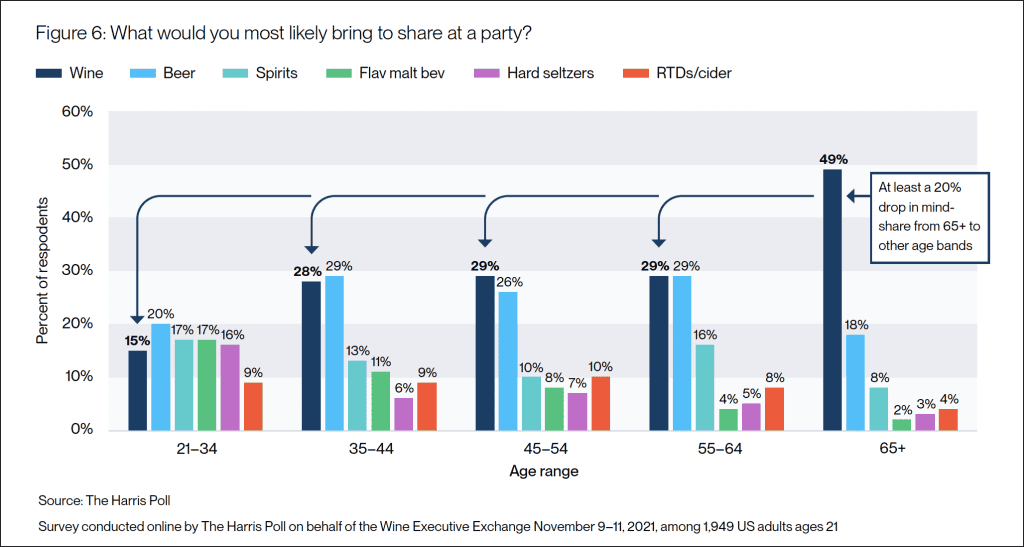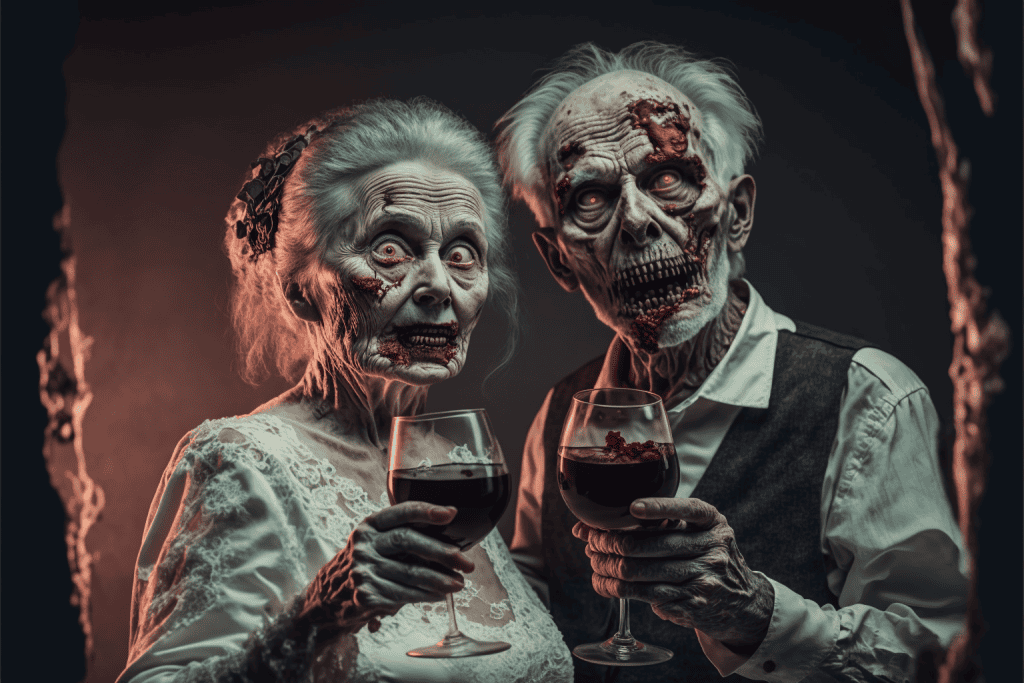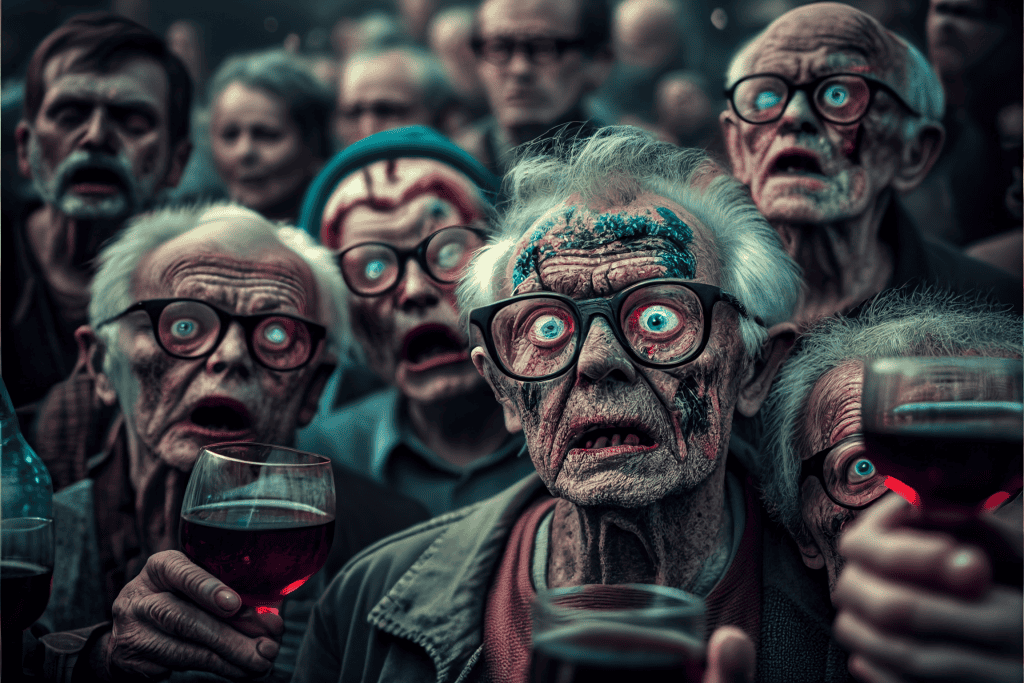They say that you can lead a horse to water, but you can’t make him drink. It seems like we’re in need of a corollary these days: you can show the wine industry signs of its demise year after year, but you can’t make people believe it.
Each year, Rob McMillan, head of the Wine Division of Silicon Valley Bank releases his State of the Wine Industry Report. It’s chock full of interesting data points about how the American wine industry feels, how business has been for the past year, and how the fundamentals of the wine economy have been performing.
The latest version of the report was released last week and simply put, the news is not great. There are plenty of other commentators out there who have spent time picking apart the highly detailed analysis that McMillan and his colleagues have done.
Here’s the bottom line for those without the time to read much, or who were just excited to click on an image featuring wine and zombies: two worrying trends continue unabated in the American wine industry.
The first is the trajectory of negative volume growth. While some (small) parts of the industry are growing, other (much, much larger) parts of the industry are shrinking, averaging out to fewer sales last year than the year before, and fewer sales next year than this year.
The continued weakness of wine at lower price points adds a particularly distressing edge to this trend. Wines between $8 and $15 are typically the wines a) most readily available and b) what many entry-level drinkers can afford to buy.
The second, even more terrifying trend is the stated lack of interest in wine by younger adults that are about to enter their prime drinking and buying years. Given the opportunity, younger adults of drinking age say they are more likely to reach for alcoholic drinks that they believe are more fun, less expensive, and healthier for them (think White Claw).

It doesn’t matter what you’re selling. If the graph of your customers’ inclination to buy your product looks like the one above, you can only come to one logical conclusion: your product isn’t relevant to younger generations.
Which means you have a marketing problem.
Of course, Rob McMillan has been telling that to the wine industry for several years.

But for all the facts and figures, all the stone-cold numbers pointing to the fact that the US wine industry is headed towards an unhappy future, one thing in particular in this year’s State of the Wine Industry report scared me more than any other and truly seemed like the first dreadful knell announcing a future that none of us want to see.
You see, McMillan hasn’t been merely content to shout at the wine industry each year about how they weren’t connecting with new generations of wine drinkers. He actually tried to do something about it.
McMillan and a bunch of other industry heavyweights got together, solicited pledges of $1 million, and built a plan to create a national wine marketing board using the same kind of government funding that brought us the “Got Milk?,” or “Beef, It’s What’s For Dinner” campaigns.
In order for that plan to go forward, McMillan needed producers representing more than 67% of the wine industry to raise their hands and agree to pay a small tax in order to fund the effort on an ongoing basis.
But some of the wine industry’s biggest players said no. And after a year of lobbying, cajoling, arguing, and pleading, McMillan and his colleagues have given up.
That, my wine-loving friends, is the most terrible news I have heard about the wine industry in a very long time.
The guy with the boat and the life preserver was sitting right there, and the swimmer, barely keeping his head up, between choking on gulps of seawater, said, “Nah, I’m fine,” and waved him off.
It’s hard to wrap my head around how the wine industry believes things are going to turn out when it seems content to do the same things it’s always been doing even as the market for wine weakens, sales drop and a whole generation of drinkers builds loyalty with other beverages.
The biggest buyers of wine right now, the Baby Boomers, are dying. And those that aren’t dying are busy asking themselves whether they really need to buy any more wine because they’re not entirely sure they’re going to be able to drink all the bottles they have in the time they have left.
If the wine industry can’t figure out how to appeal to the generation that’s going to replace them, then there’s really only one thing they can hope for. But who in their right mind wants to actually wish for a zombie apocalypse?

If it doesn’t wake up and smell which way the wind is blowing, the American Wine Industry is soon going to get the customers it deserves.